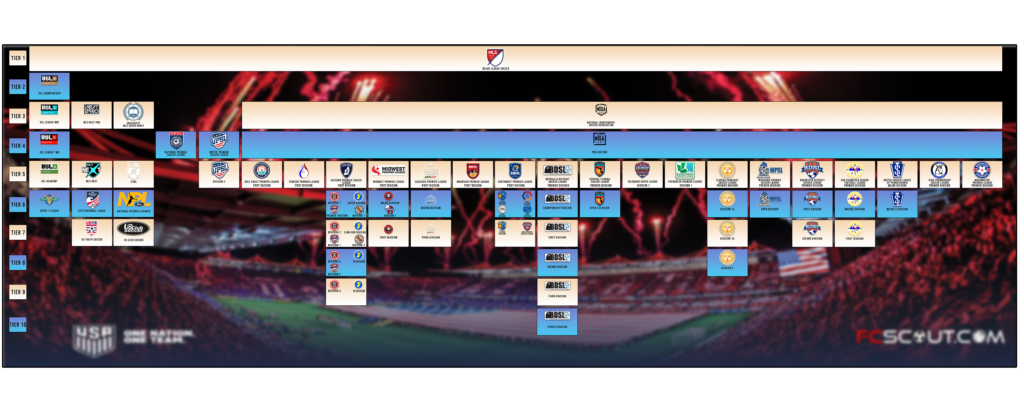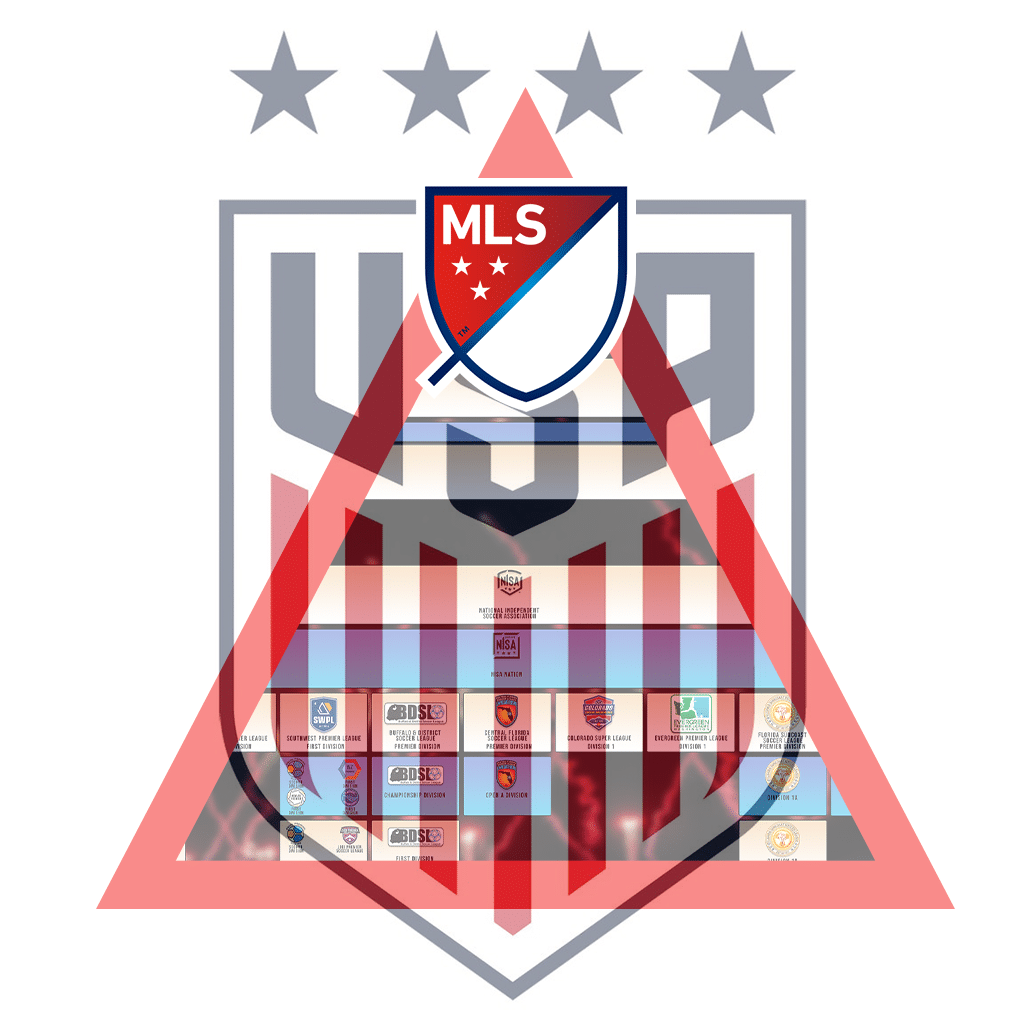The United States soccer system is a series of professional and amateur soccer leagues in the United States. Teams and leagues are not directly linked by the promotion system and relegation to the top tier as typically seen in other countries. Instead, the United States Soccer Federation (USSF) defines professional leagues in three levels, called divisions, with all other leagues sanctioned by the USSF not having an official designated level or division.
CURRENTLY, the USSF defines Division 1, Division 2, and Division 3. The top tier league in the United States is Major League Soccer. In Division 2 two, there is only 1 league, which is the USL Championship. In Division 3, there are three leagues, which include USL League One, National Independent Soccer Association (NISA), and MLS Next Pro. No teams in Division 2 have the ability to be promoted to the MLS.

The Amateur soccer system in the United States is regulated by the United States Adult Soccer Association (USASA), the only amateur soccer organization sanctioned by the USSF. Automatic promotion and relegation between its leagues were considered but were never implemented; although voluntary promotion and relegation have occurred. Some other amateur leagues sanctioned by the USASA do use promotion and relegation systems within multiple levels of their leagues. However, there has never been a merit-based promotion system offered to the USASA’s “national” leagues, the NPSL and League Two. Essentially, once a club reaches the highest level of its specific league, they are capped from further promotion to other higher-tiered leagues.
The table in this article is a best-guess estimate of how the US Soccer system is laid out. There are multiple tiers for all the independent leagues in the United States for men and a system for youth. The typical system should look more like a pyramid but with the lack of a promotion and regulation system, it looks more like a periodic table of elements.
The system that seems to have the most stability in terms of hierarchy is the USL. They have a clear path to Division 2 soccer in the United States starting from their youth teams in the Super Y League and USL Academy.
The newest addition to the US soccer system hierarchy is the implementation of the MLS Next Pro league. Players in that league compete in the third division of US soccer. There is no promotion and regulation of clubs for players to reach MLS Next Pro, although they can compete at the highest national level by joining other competitive leagues such as the USYS National League or MLS Next clubs.
Another competitive youth hierarchy is the leagues sanctioned by US Club Soccer. These include the National Premier Leagues and ECNL. Although there is no clear distinction set by the leagues as to which is at a higher level, both leagues compete with top talent clubs. It has been talked about unofficially that the biggest distinction between MLS Next and ECNL is that ECNL focuses more on college recruitment for players. ECNL also allows their athletes to play on their High School team, unlike MLS Next which does not allow it.

